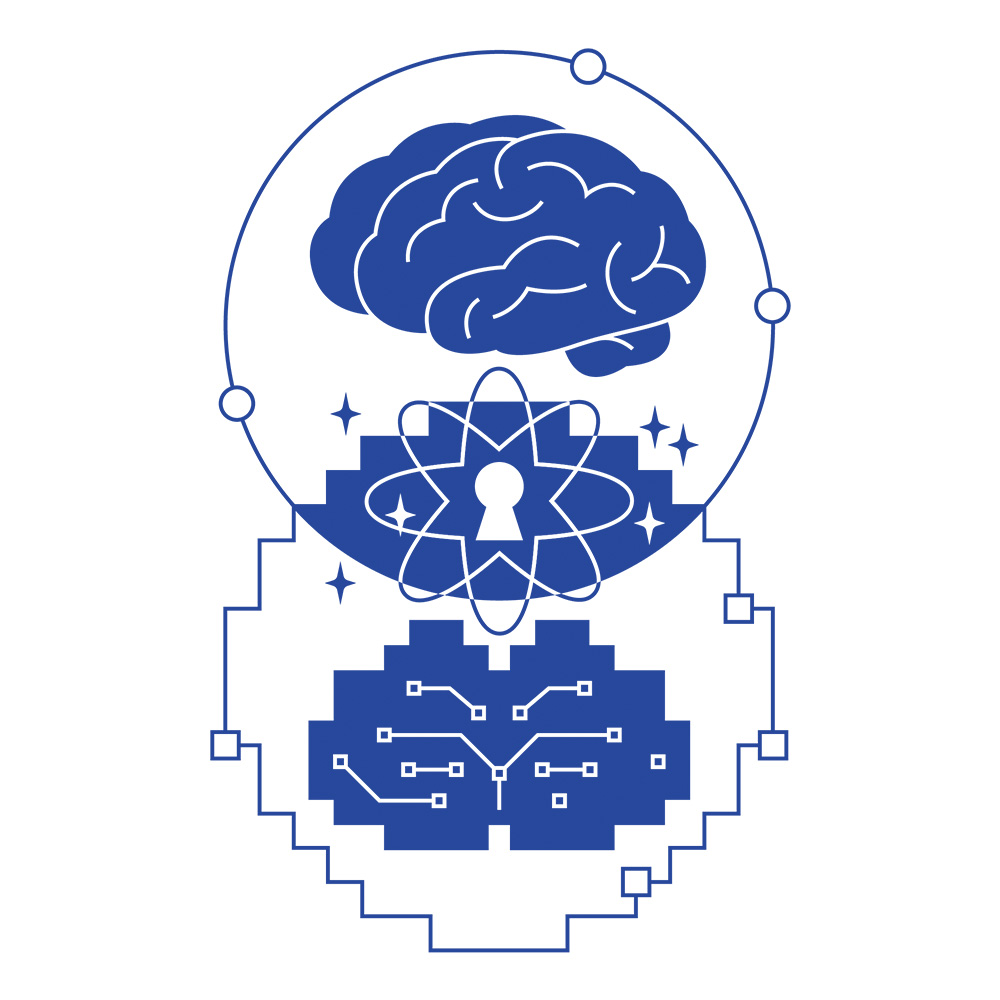
Illustrations by Thomas Hedger
When you think about everything that needs to be managed on a successful construction project, traditional elements such as planning, financing or procurement spring immediately to mind.
But in 2025, who is managing and taking advantage of the vast amount of data created by the built environment? As more processes are digitised, more data can be gathered for use on current and future projects. Therefore, the industry needs more highly skilled data and artificial intelligence (AI) professionals
This need has led to the creation of RLB’s Data and AI Transformation Academy, and Gleeds’ Data Academy. Two major construction consultancies both recognising the same problem: there is a shortage of built environment professionals equipped with the tools and knowledge to make the most of big data and AI.
These academies aim to create a new generation of AI and data-savvy surveyors, although some of these skills aren’t as new as you might think. “Chartered surveyors all generate, analyse and interpret data,” says Marie Leaphard FRICS, partner at RLB and chair of the RICS south-east regional board. “In many ways, surveyors have been data scientists since the Institution was founded in 1868. After all the RICS motto is ‘est modus in rebus’ (there is measure in all things), and all that measurement generates data. What has changed is the volume that we produce, particularly in the built environment.”
Matt Sharp, chief digital officer at RLB, says the academy will revolutionise the service they can offer clients. “As our industry undergoes significant digital and data transformation, it is crucial that we equip our people with the necessary skills,” he says. “We have been generating more data as an industry without the skills to keep up with the volume of data, let alone the quality of the data or the recognition that the data has a value.”
There are plenty of sector-wide problems that AI can help to solve, explains James Garner MRICS, head of data, insights and analytics at Gleeds. “The construction industry has long been plagued by inefficiencies, cost overruns, and data silos that hinder decision making,” he says.
“AI and data analytics offer solutions to these persistent challenges, enabling businesses to work smarter and more efficiently. For example, AI tools can be used as part of cost estimation, budgeting and scheduling – reducing errors and ensuring more accurate financial planning.”
Intelligent use of AI can also help with what are known as ‘wicked problems’ – complex and multifaceted challenges that are difficult to solve or even define. It can also be used to design ‘agentic workflows’ where a series of autonomous AI agents work together to achieve a specific task, such as managing material procurement or dealing with large volumes of customer enquiries.
Skills for the future
Gleeds’ Upskill Programme aims to put 100 employees through CITB apprenticeships in 2025, teaching them a range of practical data and AI-literacy skills. “By providing structured training in [Microsoft] Power BI, automation, generative AI and data analysis, professionals can use AI tools for enhanced decision-making,” says Garner.
Leaphard says there are plenty of data-enthusiasts in the industry who have been developing their own skills, but more consistency and structure is needed. “We need to raise skills at all levels,” she says. “Some people need general awareness and others deep skills and learning that may see their entire role specialise in data and AI.
“We must also recognise that some parts of the built environment that we interact with are using decades-old ways of working.”
As with any training undertaken, the crucial question is: what tasks can someone do after attending one of these data academies that they couldn’t do before?
“Some of the skills that our people are learning include analysing the processes and systems that we use,” says Sharp. “That business analysis is required to harvest data in a more efficient and effective way. Our people will also be better equipped to articulate the benefits of data and AI to our clients.”
What they’ll learn is a mix of data and information management, as well as AI fluency, says Leaphard. “There is a lot of hype around AI and our profession is trusted to ground its advice in simple truth that goes beyond the hype.”
Garner gives a few more examples of the practical skills Gleeds employees will take away from the Data Academy, including advanced dashboarding and data visualisation (eg creating interactive dashboards in Power BI, replacing time-consuming manual reports), process automation, AI-assisted cost management, and using generative AI effectively (eg understanding and applying AI prompts to improve work processes).

“In many ways, surveyors have been data scientists since the Institution was founded in 1868” Marie Leaphard FRICS, RLB
A competitive advantage
It’s not just the big beasts like Gleeds or RLB that stand to benefit from greater AI literacy. SMEs, which are often able to adopt new practices more quickly than their larger counterparts, can gain a competitive advantage by being ahead of the curve.
"There are challenges for SMEs in that there may not be the capacity for so much specialism in the organisation,” says Sharp. But there is no reason why SMEs cannot capitalise on the benefits, it may just be about multiskilling employees. Tools and products are available that are capable of being implemented ‘off the shelf’ with minimal development or customisation. The smaller teams in SMEs may also result in easier adoption and people and process change management.
“On the flip side, the SMEs are likely to have smaller data sets and less frequency of high-volume repeatable processes. It is perhaps not so much whether the adoption is easier, but recognising that the approach would be different for different types of business.”
Garner agrees that the benefits of AI-adoption don’t directly correlate to the size of a company, saying: “By investing in training and technology, both SMEs and large firms can future-proof their workforce and be part of industry-wide transformation.”
“The construction industry has long been plagued by inefficiencies, cost overruns, and data silos that hinder decision making.” James Garner MRICS, Gleeds


